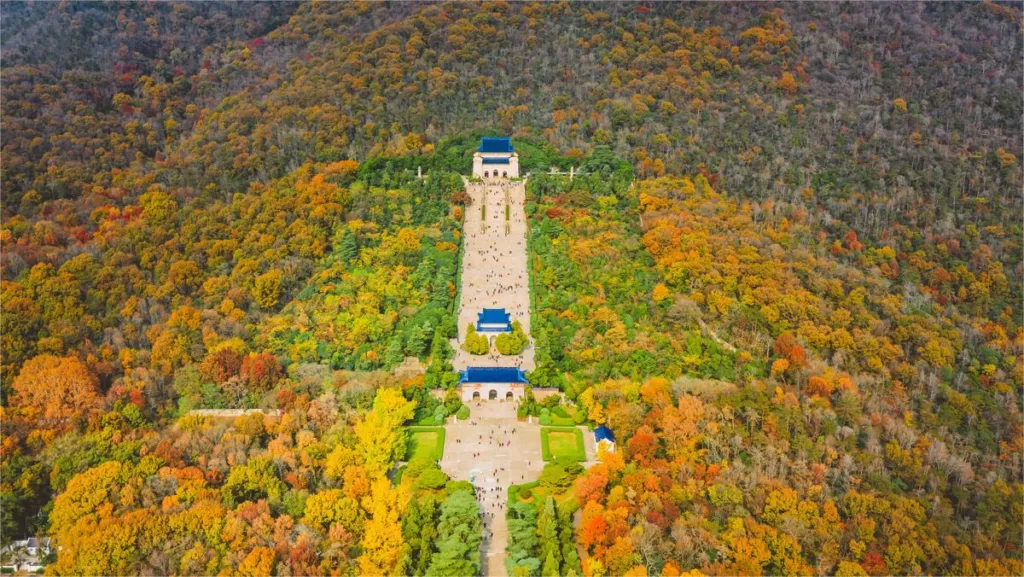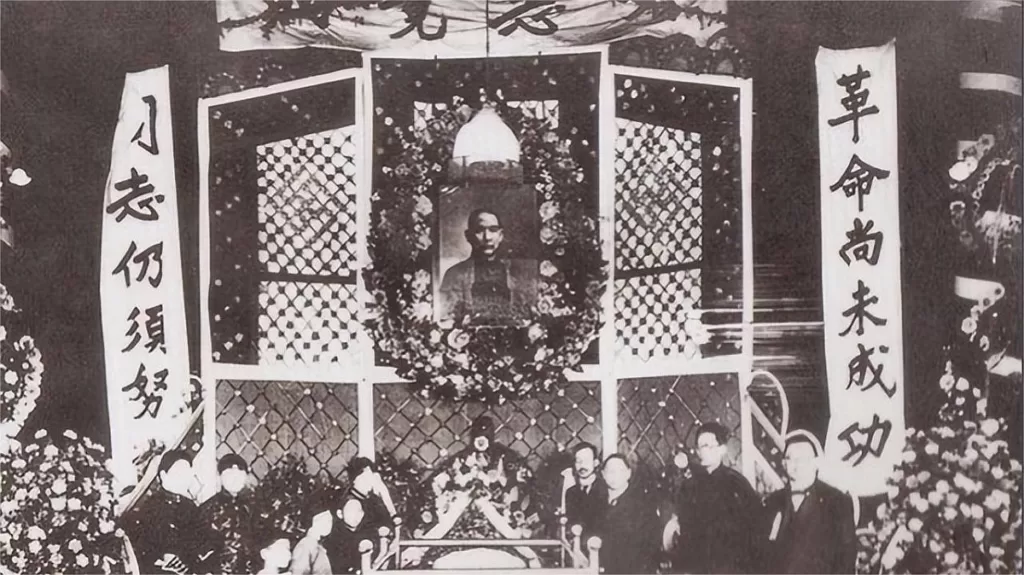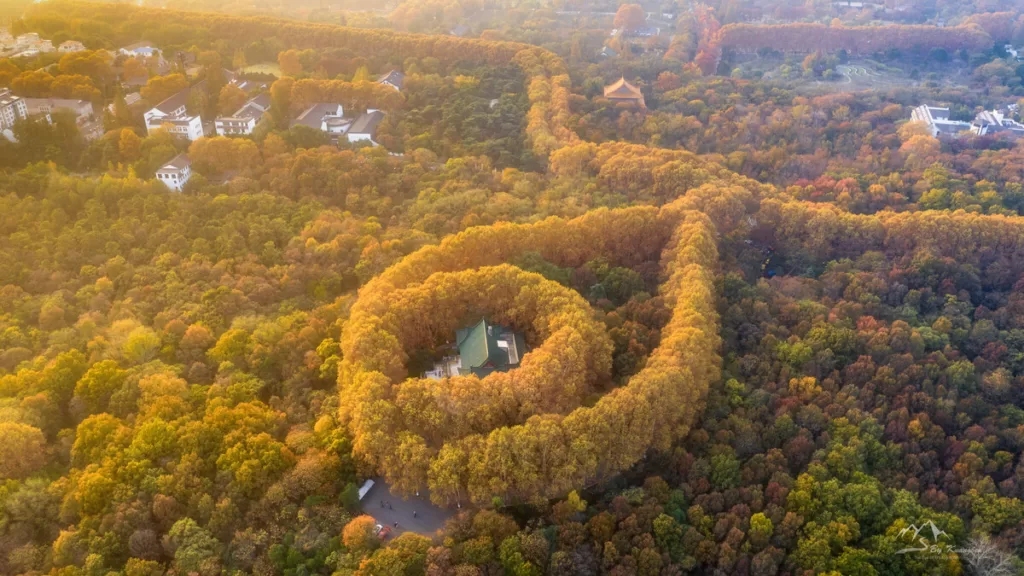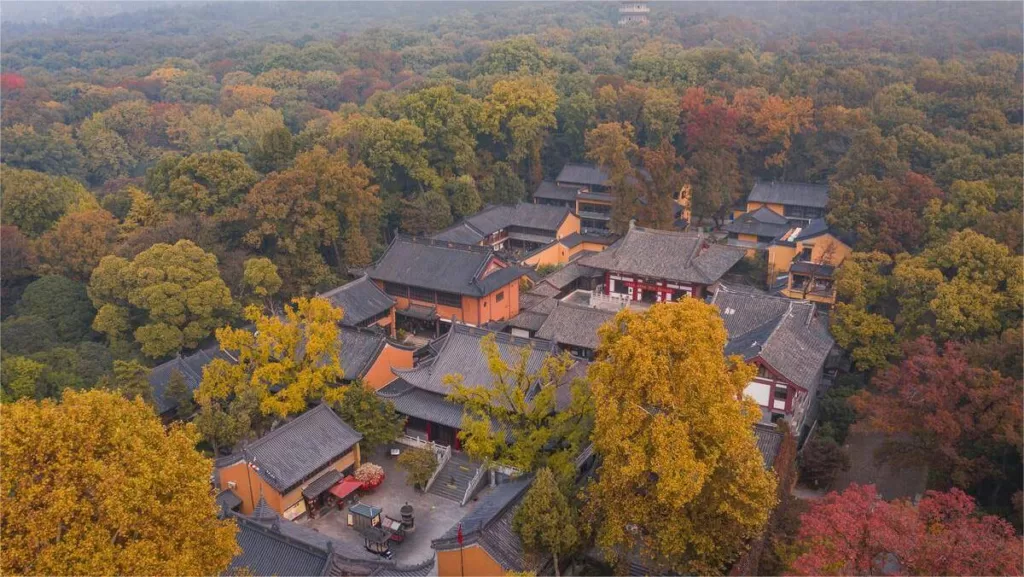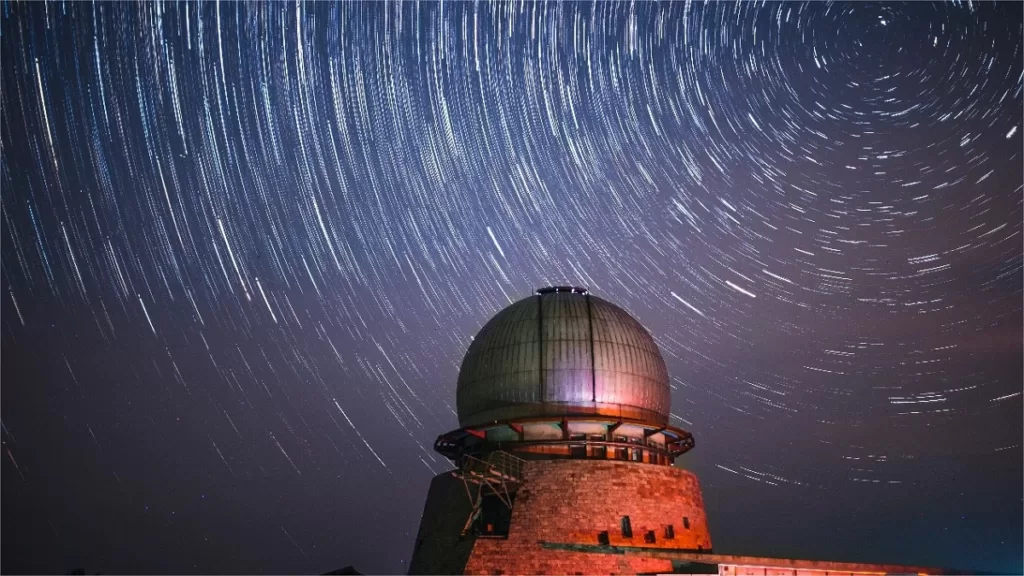The Sun Yat-sen Mausoleum (中山陵), located in Nanjing, China, is a significant historical and cultural site that commemorates the life and achievements of Dr. Sun Yat-sen, often referred to as the “Father of Modern China.” This majestic mausoleum stands atop the picturesque Purple Mountain and is considered a symbol of China’s republican revolution.
The mausoleum was built after Dr. Sun Yat-sen’s death in 1925 and completed in 1929. It encompasses an area of over 80,000 square meters and features a blend of traditional Chinese and modern architectural styles. Its grand entrance is adorned with a marble archway, inscribed with the words “The World Belongs to the People.”
As visitors ascend the impressive stairway, they are greeted by lush gardens and serene pathways leading to the main hall. At the heart of the mausoleum lies the solemn burial chamber, where Dr. Sun Yat-sen’s remains are interred. The chamber is elegantly designed with intricate carvings and statues that depict important moments from Sun Yat-sen’s life.
The Sun Yat-sen Mausoleum not only serves as a final resting place but also as a place of remembrance and education. It is visited by countless tourists and locals who come to pay their respects and learn about the ideals and vision of Dr. Sun Yat-sen. The mausoleum also houses a museum that displays historical artifacts, documents, and photographs related to Dr. Sun and the revolutionary period.
In summary, the Sun Yat-sen Mausoleum in Nanjing is a revered landmark that preserves the legacy of Dr. Sun Yat-sen and his contributions to modern China. It stands as a testament to his enduring influence and continues to inspire generations with his vision of a democratic and prosperous nation.
Table of Contents
- Basic Information
- Location and Transportation
- Highlights of Sun Yat-sen Mausoleum
- Vlog about Sun Yat-sen Mausoleum
- Useful Tips Summarized from Reviews
- Facts about Sun Yat-sen
- Attractions Near Sun Yat-Sen Mausoleum
Basic Information
| Website | http://zschina.nanjing.gov.cn/ |
| Estimated Length of Tour | 2 hours |
| Ticket Price | Free |
| Opening Hours | 8.30 – 17.00 throughout the year The burial chamber is only open from Tuesday to Friday The mausoleum is closed on Mondays |
| Telephone Number | 0086-025-84433582 |
Location and Transportation
The Sun Yat-sen Mausoleum stands atop the scenic Purple Mountain, offering breathtaking views of the surrounding landscape. The precise address of the mausoleum is No. 1 Zhongshanling Road, Xuanwu District Nanjing, Jiangsu Province, China. To get there, you can choose the following ways:
- Take bus No. 34 and get off at Sun Yat-sen parking lot. Transfer to Sight-seeing bus No.2 or walk to the entrance.
- The nearest metro station to the Sun Yat-sen Mausoleum is Xiamafang on line 2. Transfer to bus No.34 and follow the above route.
- Or you can directly walk from the hill foot to the Mausoleum. It is only 2.4 kilometers away.
Highlights of Sun Yat-sen Mausoleum
Grand Entrance

The grand entrance of the Sun Yat-sen Mausoleum leaves a lasting impression on visitors. A magnificent marble archway serves as the gateway to this historic site, with the words “The World Belongs to the People” inscribed upon it. The archway signifies the profound significance of the mausoleum and the ideals it represents. As visitors pass through this majestic entrance, they are immediately immersed in the rich history and legacy of Dr. Sun Yat-sen, setting the stage for a meaningful and enlightening journey through one of China’s most iconic landmarks.
Majestic Stairway
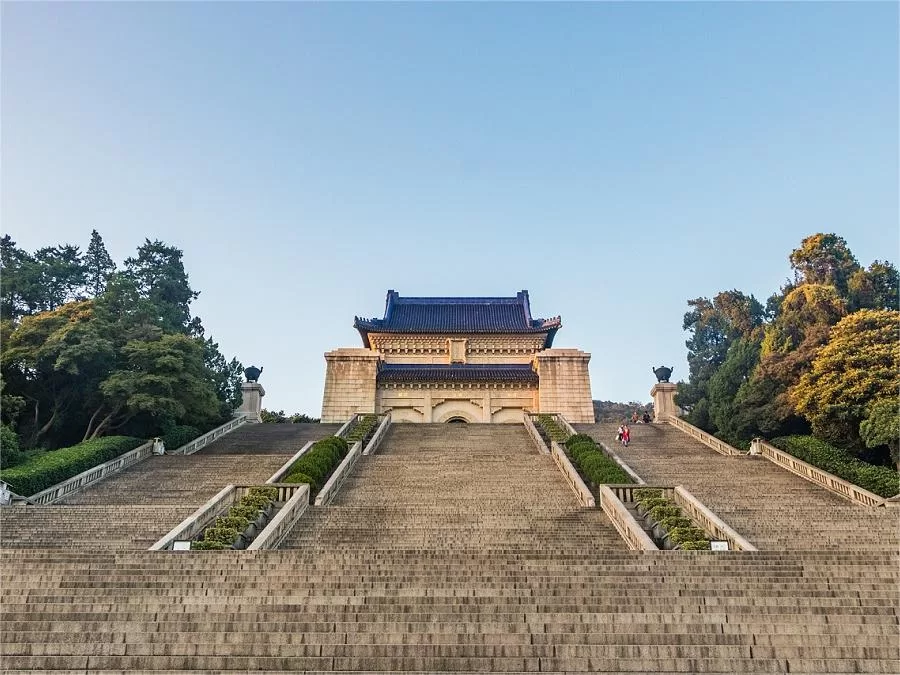
The Majestic Stairway at the Sun Yat-sen Mausoleum is a striking feature that captivates visitors. As they ascend the grand stairway, surrounded by lush greenery and serene gardens, a sense of awe and reverence envelops them. The stairway is adorned with intricate stone carvings depicting mythical creatures and symbolic figures, adding to its allure. Each step represents a symbolic stride towards the legacy of Dr. Sun Yat-sen, the “Father of Modern China.” This majestic ascent sets the tone for the profound experience that awaits, inviting visitors to embark on a meaningful journey through history and reflection.
Hall of Tribute
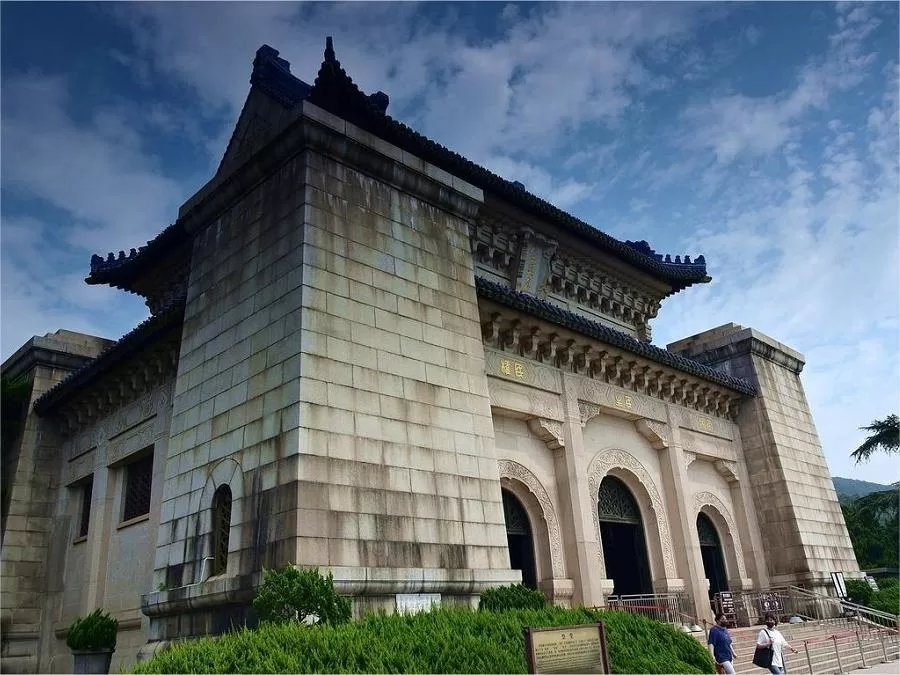
The Hall of Tribute at the Sun Yat-sen Mausoleum is a magnificent structure that commands attention and reverence. Stepping into this grand hall, visitors are greeted by a larger-than-life statue of Dr. Sun Yat-sen, a towering tribute to the visionary leader. The hall exudes a sense of solemnity and importance, with its traditional Chinese architectural elements and meticulously crafted details. Within its walls, exhibits and displays chronicle the life, achievements, and contributions of Dr. Sun Yat-sen, providing a deeper understanding of his role in shaping China’s history.
Burial Chamber
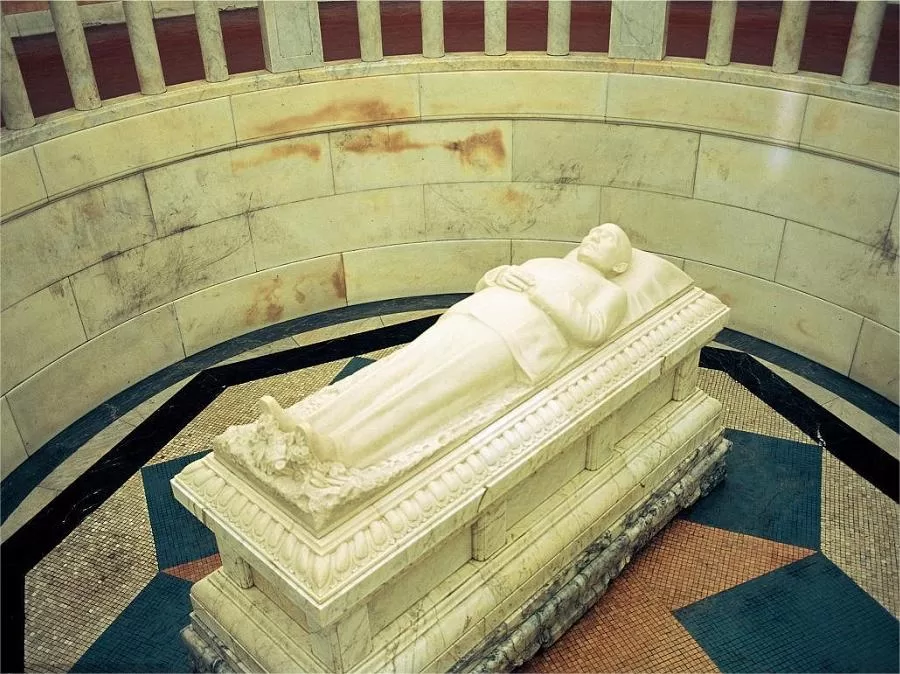
Deep within the Sun Yat-sen Mausoleum lies the solemn Burial Chamber, a place of profound significance. Upon entering this sacred space, visitors are enveloped by an atmosphere of reverence and serenity. The Burial Chamber is adorned with intricate carvings and statues, depicting key moments from Dr. Sun Yat-sen’s life. It is here that the remains of this visionary leader rest, paying homage to his enduring legacy. The chamber invites contemplation and reflection, offering a poignant connection to the past and the ideals that Dr. Sun Yat-sen championed during his remarkable journey in shaping modern China.
Amphitheatre

The Amphitheatre at the Sun Yat-sen Mausoleum is a remarkable feature that adds a touch of grandeur to the site. Nestled within the sprawling complex, this open-air theater offers a picturesque setting for cultural events and ceremonies. With its semi-circular design and terraced seating, the Amphitheatre provides an ideal space for performances and gatherings. Visitors can witness commemorative ceremonies, concerts, and other cultural events that celebrate the life and legacy of Dr. Sun Yat-sen.
Museum and Exhibits

Adjacent to the Sun Yat-sen Mausoleum lies a captivating museum that immerses visitors in the rich history and legacy of Dr. Sun Yat-sen. The museum houses a diverse collection of artifacts, documents, and photographs that offer insight into his life and the revolutionary period. Exhibits showcase key moments, achievements, and the impact of Dr. Sun’s vision for a modern China. From historical relics to interactive displays, the museum provides a comprehensive exploration of Dr. Sun Yat-sen’s ideals and their lasting influence. It is a place where visitors can deepen their understanding of China’s transformative history and the visionary leader who shaped it.
Vlog about Sun Yat-sen Mausoleum
Useful Tips Summarized from Reviews
Free Photo Opportunity: There is a free photo opportunity at Zhongshan Mausoleum, and you can receive a small photo pendant. It’s optional, and visitors can choose whether or not to take the photo. Keep in mind that if you want a larger photo, there may be a fee.
392 Steps of Zhongshan Mausoleum: Climbing the 392 steps of Zhongshan Mausoleum, representing the population of China at that time (392 million), is not as tiring as one might imagine. It’s highly recommended to go up as it offers a panoramic view of Nanjing.
Distance from Ticket Counter: There is a bit of distance from the ticket counter at Zhongshan Scenic Area to Zhongshan Mausoleum, approximately 1 km. However, it’s not too long, and you have the option to either walk for about 20 minutes or take a 10 RMB ride. It’s recommended to walk as both sides of the road are lined with wutong trees, providing ample shade and making the journey comfortable. Waiting times for the car can be long, and by the time you walk up, the cars might still be in line.

